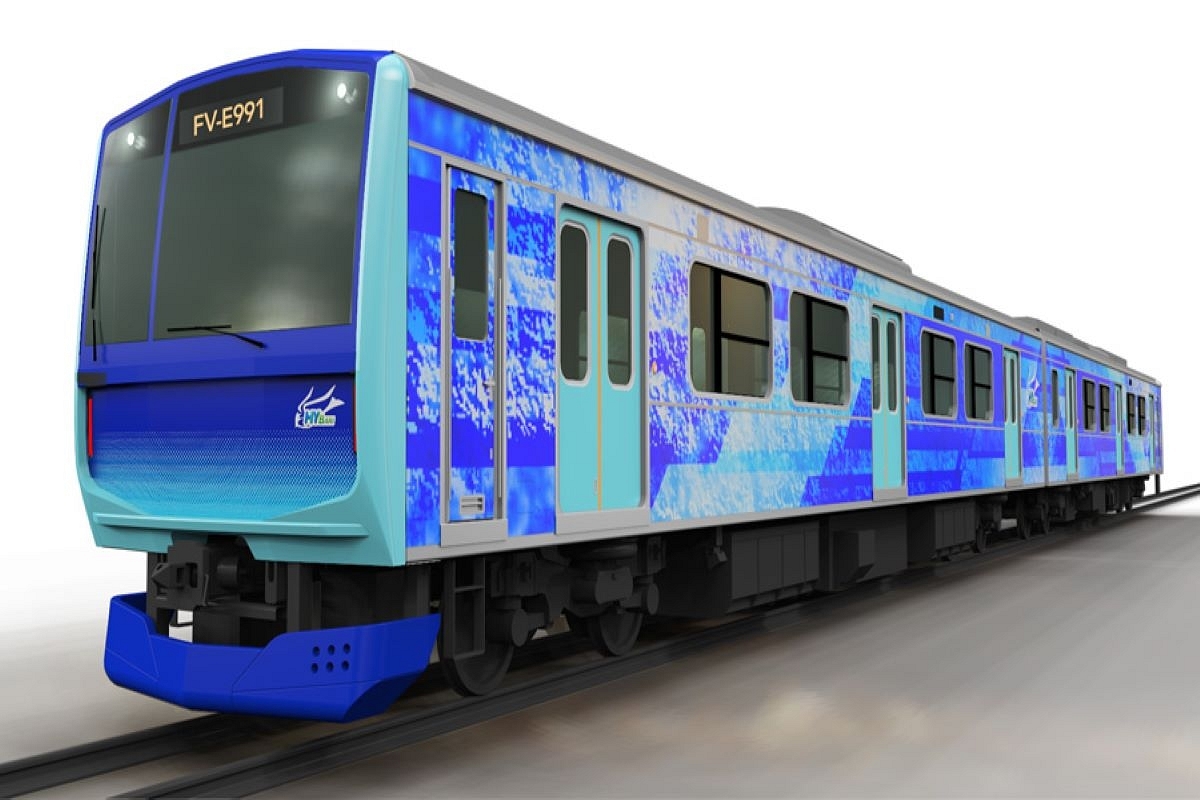Analysis
Japan's First Hydrogen Hydrid Train Hybari Set For Safety Trial Next Month
- East Japan Railway Company (JR East), the largest railway company in Japan, is all set to begin safety testing the country's first hydrogen-fueled train beginning next month (March 2022).
- The two-car "Hybari" train - a combination of hybrid and the Japanese word for a lark - was developed at a cost of $35 million and can travel up to 140 kilometres (87 miles) at a top speed of 100 km/h on a single filling of hydrogen. Commercial services is targeted for 2030.

Hybari Rendering of the Exterior View (Pic Courtesy: Toyota)
East Japan Railway Company (JR East), the largest railway company in Japan, is all set to begin safety testing the country's first hydrogen-fueled train beginning next month (March 2022).
The two-car "Hybari" train - a combination of hybrid and the Japanese word for a lark - was developed at a cost of $35 million and can travel up to 140 kilometres (87 miles) at a top speed of 100 km/h on a single filling of hydrogen. Commercial services is targeted for 2030.
JR East, Hitachi, and Toyota are collaborating on the development of test railway vehicles equipped with hybrid systems that use hydrogen-powered fuel cells and storage batteries as their source of electricity. While Toyota will develop the fuel cell device and Hitachi will develop the hybrid drive system.
How the Hydrogen-fueled Trains work?
Hybari runs off hydrogen fuel cells and batteries. The hydrogen used to fill the hydrogen tank is supplied to the fuel cell device and undergoes a chemical reaction with oxygen in the air to generate electricity. The main circuit storage battery is charged by electric power from the fuel cell device and by capturing and converting energy to electric power using regenerative braking. The hybrid drive system supplies the electric power to the traction motors from both the fuel cell device and the main circuit storage battery, controlling the movement of the wheels.
Hydrogen-fueled trains will require no overhead lines or substations. After checking energy efficiency through testing, JR East plans to replace diesel trains, mainly in rural areas, while also possibly exporting to international markets.
Japanese government unveiled plans to boost hydrogen's usage amount to 20 million tons by 2050. Japanese companies like Iwatani Corp and Kawasaki Heavy Industries Limited are trying to build scalable hydrogen supply chains to bring down its price and drive widespread adoption.
The development of rolling stock powered by hydrogen will help towards decarbonisation of the transport sector and diversify energy sources.
Germany has been the pioneer in the design and rollout of hydrogen-powered vehicles. It built the world's first train built by Alstom SA in 2018. Siemens AG and Deutsche Bahn AG are developing new regional trains and special fueling stations, which are expected to be tested in 2024.
Introducing ElectionsHQ + 50 Ground Reports Project
The 2024 elections might seem easy to guess, but there are some important questions that shouldn't be missed.
Do freebies still sway voters? Do people prioritise infrastructure when voting? How will Punjab vote?
The answers to these questions provide great insights into where we, as a country, are headed in the years to come.
Swarajya is starting a project with an aim to do 50 solid ground stories and a smart commentary service on WhatsApp, a one-of-a-kind. We'd love your support during this election season.
Click below to contribute.
Latest